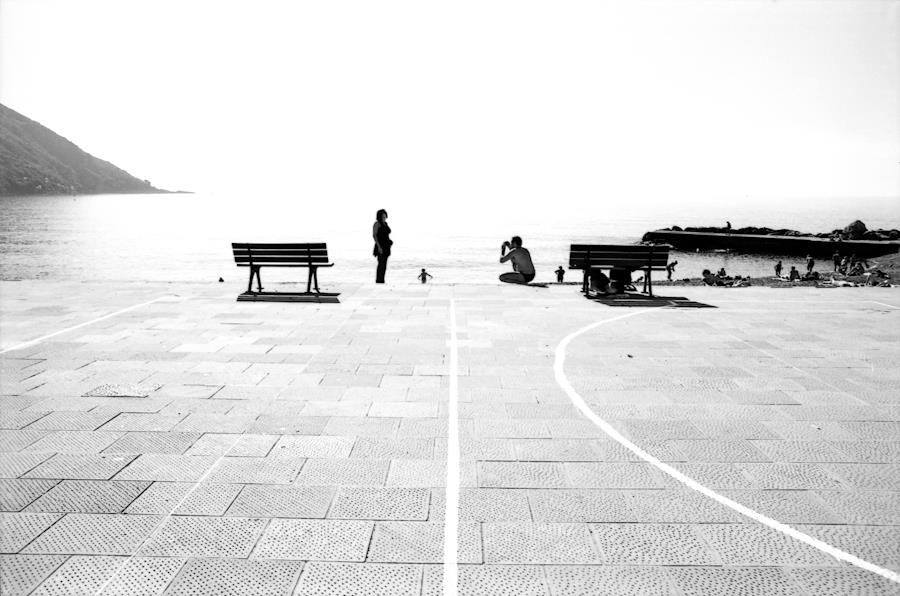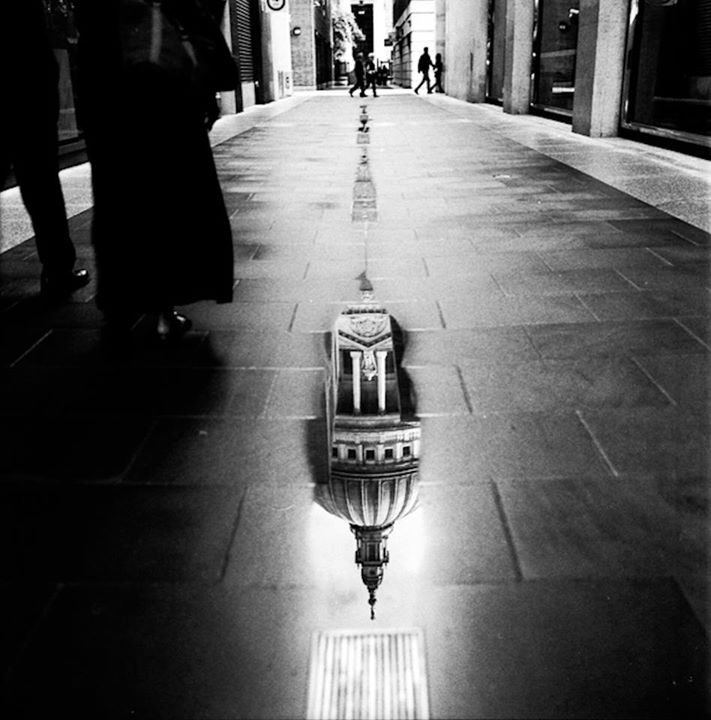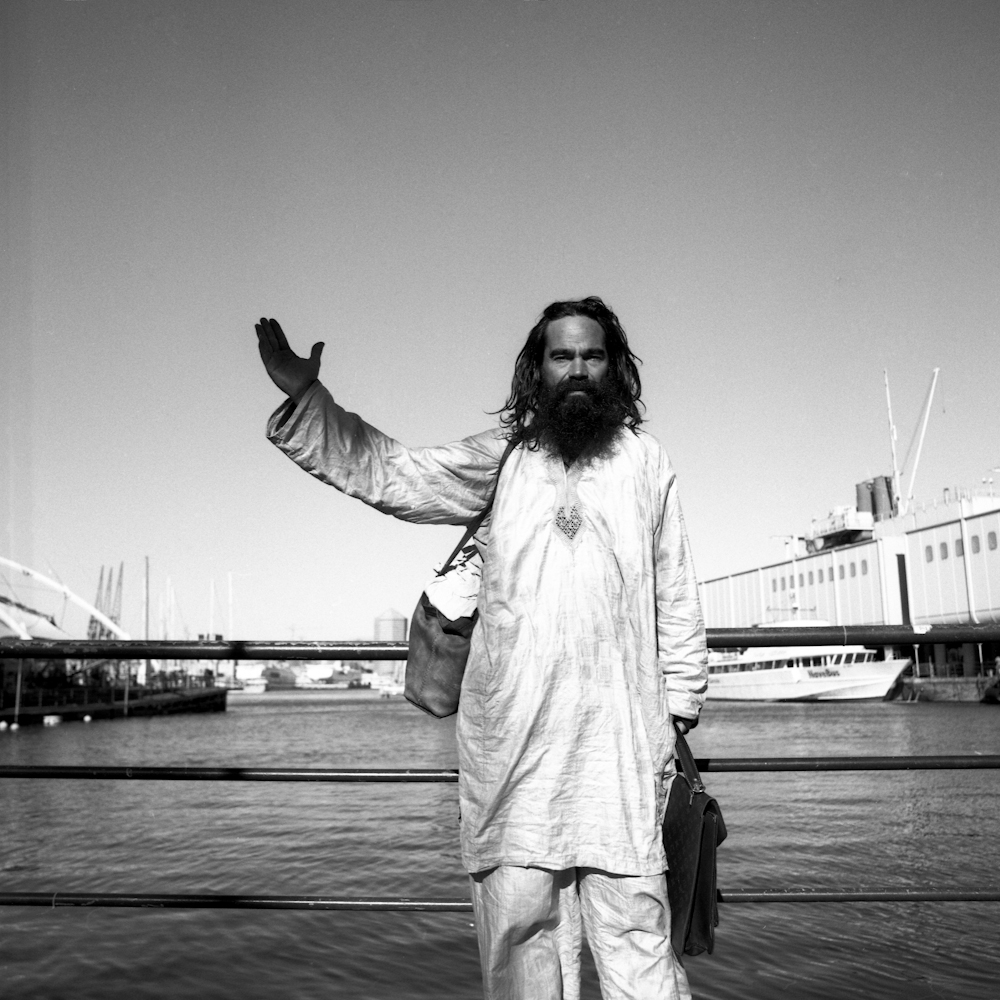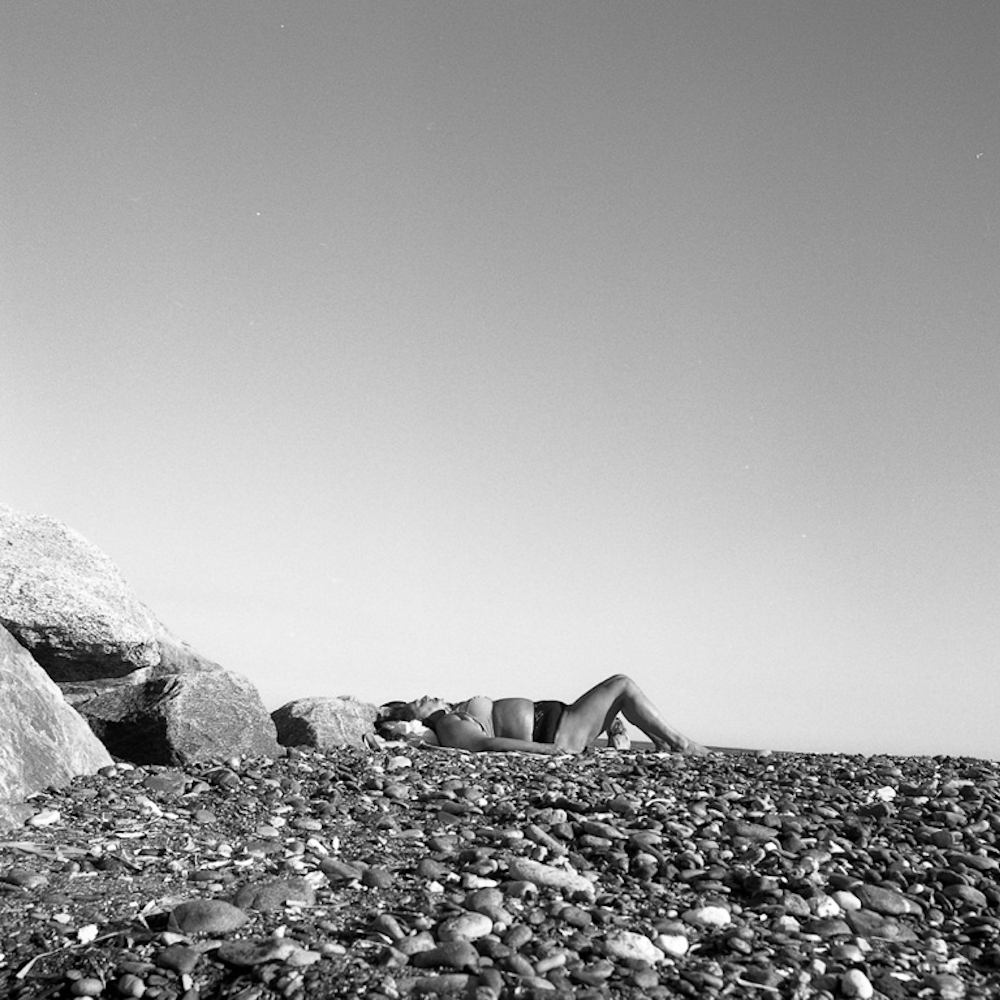A great black and white photograph can work despite the lack of colour – and often it can work because there is an absence of colour. Shape and form become paramount. What could have been distracting in colour is turned into tone and texture.
It’s that balancing of tone that can be tricky; but understanding how what you’re looking at will translate into black and white is vitally important. So what can you do?
Hard lights renders jet black shadows that create bold shapes. There’s no intense colours to distract the eye – hard whites in the light part of the frame and deep shadows complement each other.
It’s no accident that a lot of photographers – film and digital – shoot portraits in black and white. Texture is enhanced, and anything colourful that might distract in the background is nullified. You also get rid of any problems with skin tone (if you don’t have make-up close to hand). With portraits it is always about making a connection with a viewer; sometime it can be easier by taking colour out of the equation. Take a quick look at the images of Jane Bown, who shot black and white film right until the end of her career – they show just how compelling a simple black and white portrait can be.
On the other hand, the softness of overcast light, fog and mist suits black and white to a tee aswell. Desaturated colours can often look drab and unappealing; with the colour removed, the eye looks instead for other elements in the picture. The softness serves as a textured backdrop to bring your subject to the fore. When you bring something closer to the lens you’ll lose the softening effect, but it will have darker tones and therefore draw the viewer’s eye.
Black and white films captures a great deal more shadow detail than digital black and white or colour film. You can use this to your advantage to help your composition and concentrate attention on your subject. Just remember that if you’re pushing black and white film, you’ll lose that shadow detail – all you get is a mass of inky black.
Keep an eye out for shapes that make a picture – if a shape is strong enough to dominate an image, it will be even more compelling in black and white. Just make sure there are a mix of tones, and that the subjects stands out from the background (a silhouetted figure through a window, for instance.)
Try and experiment. Take black and white film to capture a scene that you might think has to be shot in colour – a forest in summer, a beach on a blazing hot day, a parade or carnival. Learn to look at what it is you’re actually taking a picture of, and whether colour is the only way to describe it.
Author: Stephen Dowling/Zorki Photo











